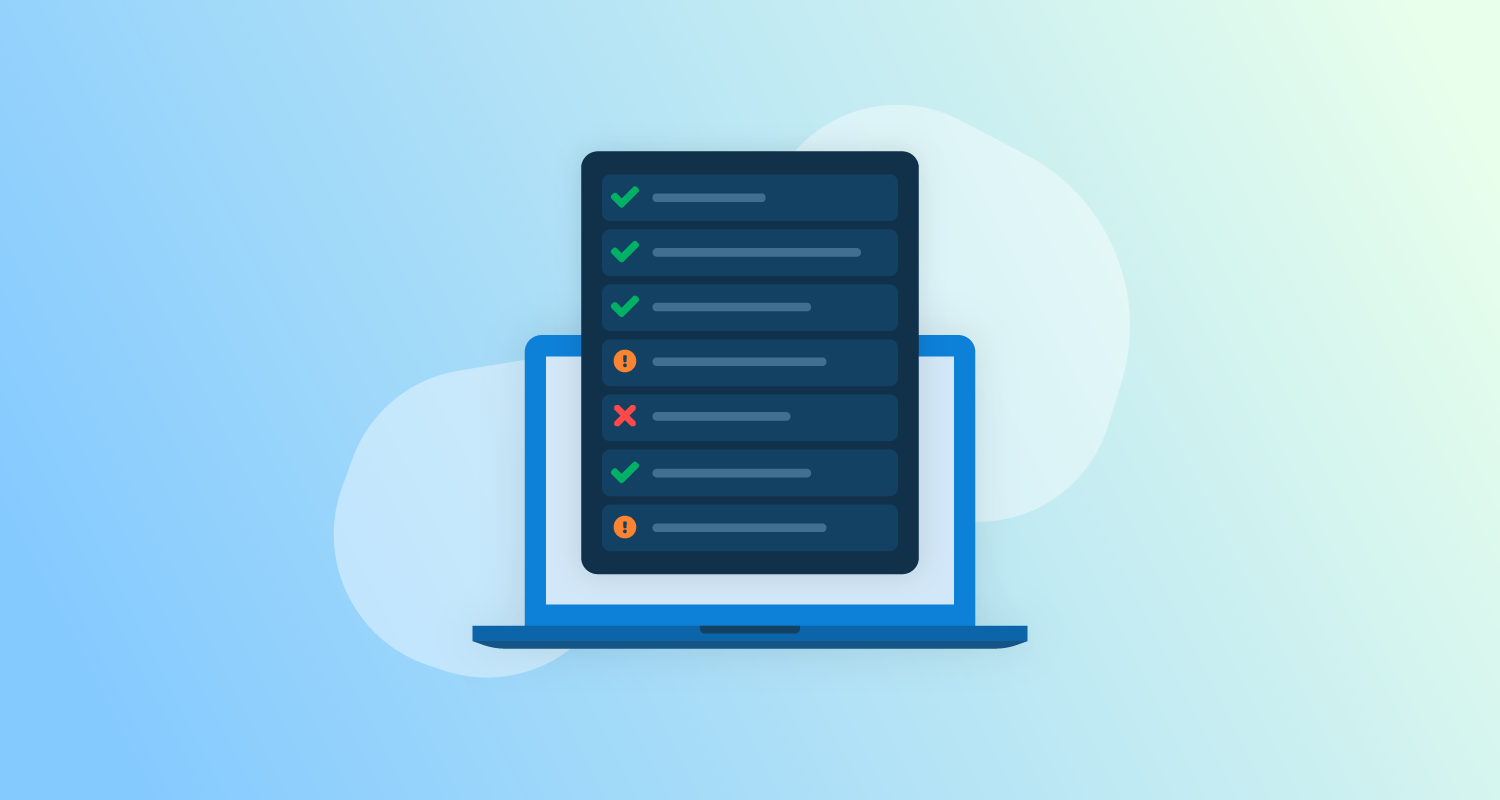What is site reliability engineering (SRE)?
Site reliability engineering (SRE) applies software engineering principles to operations tasks. It focuses on improving the reliability, scalability, and efficiency of systems by automating repetitive work (toil) and optimizing system performance. SRE practitioners, often referred to as site reliability engineers, are responsible for the availability, latency, performance, monitoring, capacity planning, and emergency response for a service.
Key practices in SRE include defining service level objectives (SLOs), using error budgets to prioritize work, and employing monitoring and incident response strategies. The goal is to bridge the gap between development and operations by treating system reliability as a feature of the product.
What is DevOps?
DevOps is a set of practices and cultural philosophies aimed at unifying software development (Dev) and IT operations (Ops) teams. The primary goal of DevOps is to shorten the software development lifecycle and enable faster, more reliable software delivery.
DevOps emphasizes principles like collaboration, automation, and continuous improvement. It integrates practices such as Continuous Integration (CI), Continuous Delivery (CD), infrastructure as code (IaC), and monitoring to improve workflow efficiency and system quality. By breaking down silos, aligning goals, and fostering a shared responsibility for system outcomes, DevOps helps organizations adapt quickly to changing customer needs and market demands.
Origins and history of SRE and DevOps
SRE originated at Google in the early 2000s as a response to operational inefficiencies and growing system complexities. The approach introduced practices borrowed from software engineering to manage large-scale systems more effectively, emphasizing reliability from the start. Google’s SRE practices have since shaped an industry-wide approach to system reliability.
DevOps emerged in 2009, building off Agile practices and lean methodologies. It aimed to eliminate silos between development and operations teams and promote a culture of collaborative efficiency. The cultural and technical movement encourages automation and Continuous Integration, helping organizations deliver applications and services with increased speed and reliability.
Key principles and philosophies
SRE principles
SRE principles focus on reliability in software products. One key principle is error budgets, which balance innovation and reliability by quantifying acceptable levels of failure. This approach ensures developers can take calculated risks in deploying new features while maintaining system stability. Another principle is using service level objectives (SLOs) to define and maintain target performance levels.
SRE emphasizes automation to reduce manual work and increase efficiency. The aim is to engineer repetitive operations away with software. By automating manual tasks, teams can focus on more strategic objectives and innovations. SRE promotes diligent performance measurement, using this data to anticipate potential failures and address them proactively.
DevOps principles
DevOps promotes a culture of collaboration among development, operations, and other stakeholders within the software development process. This cultural shift aims to deliver software faster and more efficiently by enabling communication across teams. DevOps encourages frequent, small updates that improve software reliability and functionality.
Automation in DevOps helps simplify workflows, minimize errors, and improve deployment speed. Continuous Integration and Continuous Delivery (CI/CD) pipelines are fundamental, supporting rapid deployment and feedback loops. Other elements include integrating feedback mechanisms and fostering a culture of continuous organizational learning and improvement.
Roles and responsibilities in SRE and DevOps
SRE roles and responsibilities
Site reliability engineers (SREs) play a crucial role in ensuring the reliability and performance of software systems. Their responsibilities often include:
- Defining and monitoring reliability metrics: SREs establish and track service level indicators (SLIs) and service level objectives (SLOs) to measure system health and reliability. These metrics guide decision-making around system improvements and risk management.
- Managing incident response: SREs design and maintain incident management processes, including alerting, escalation, and post-incident reviews. Their goal is to minimize downtime and learn from failures to prevent recurrence.
- Automating operational tasks: A key focus of SRE is reducing manual toil by creating tools and scripts that automate repetitive or error-prone tasks, such as deployment, scaling, and monitoring.
- Capacity planning and performance optimization: SREs analyze system performance data to anticipate growth and ensure systems can handle increasing loads. They implement optimizations to improve scalability and efficiency.
- Building resilient systems: SREs proactively identify potential points of failure and implement fault-tolerant designs. This includes redundancy, failover mechanisms, and chaos engineering practices to test system resilience.
- Balancing reliability and innovation: Using error budgets, SREs help teams balance system reliability with the need to innovate and release new features.
DevOps roles and responsibilities
DevOps practitioners are responsible for fostering collaboration and efficiency across the software development lifecycle. Their key responsibilities include:
- Enabling collaboration: DevOps engineers act as a bridge between development, operations, and quality assurance teams, ensuring smooth communication and alignment on goals.
- Implementing CI/CD pipelines: They design and maintain Continuous Integration and Continuous Delivery (CI/CD) pipelines to automate the building, testing, and deployment of software.
- Infrastructure as code (IaC): DevOps engineers use tools like Terraform or Ansible to manage infrastructure programmatically, enabling consistent and repeatable deployments across environments.
- Monitoring and feedback: They establish monitoring systems to track application performance and gather user feedback. Insights from these systems are used to optimize workflows and address issues proactively.
- Ensuring system security and compliance: DevOps roles often involve integrating security practices into the development pipeline, a concept known as DevSecOps. This includes automating security scans and ensuring compliance with industry standards.
- Driving continuous improvement: DevOps practitioners promote a culture of continuous learning and process refinement, encouraging teams to adopt new tools, techniques, and practices that improve efficiency and quality.
Similarities between SRE and DevOps
SRE and DevOps both aim to improve the efficiency, reliability, and quality of software delivery and system operations. They share a common philosophy of bridging the gap between development and operations teams to foster collaboration and reduce silos. Key similarities include:
- Focus on automation: Both disciplines emphasize automation to reduce manual work and improve consistency. Whether through CI/CD pipelines in DevOps or automating operational tasks in SRE, automation is critical to improving system efficiency and minimizing errors.
- Metrics-driven approaches: SRE relies on metrics like SLIs, SLOs, and error budgets, while DevOps tracks performance metrics through monitoring and feedback loops. In both practices, data is used to guide decisions and prioritize improvements.
- Continuous improvement: Both SRE and DevOps promote a culture of ongoing learning and refinement. They encourage teams to experiment, adopt new tools, and iteratively improve processes and systems.
- Collaboration across teams: Both practices focus on breaking down silos between development, operations, and other stakeholders. They advocate for shared ownership of system outcomes, enabling teams to work together toward common goals.
- Resilience and reliability: SRE and DevOps both strive to build resilient systems that can gracefully handle failures. DevOps integrates practices like automated testing, while SRE employs fault-tolerant designs and chaos engineering.
Related content: Read our guide to DevOps metrics
Differences between SRE and DevOps
Despite the similarities, it’s important to understand how site reliability engineering differs from DevOps.
Core focus
SRE is concerned with ensuring the system’s reliability, scalability, and performance, treating these aspects as core features of a product. It focuses on applying software engineering principles to operational tasks, minimizing toil, and creating systems that can function consistently under diverse conditions. SRE approaches reliability as a measurable and manageable component, ensuring systems meet targets like uptime and latency.
DevOps emphasizes optimizing the entire software development and delivery lifecycle. Its main objective is to enable organizations to ship software quickly, securely, and reliably by fostering collaboration across development, operations, and other teams. DevOps focuses on breaking down silos and creating a culture of shared responsibility to simplify workflows and accelerate time-to-market.
Measurement frameworks
SRE uses precise and actionable reliability metrics such as service level indicators (SLIs), service level objectives (SLOs), and error budgets. SLIs provide a quantitative measure of system performance (e.g., request latency or error rate), while SLOs define the target values for these indicators. Error budgets, calculated as the permissible deviation from the SLOs, allow teams to decide whether to prioritize system improvements or new feature development.
In DevOps, measurement frameworks focus on operational efficiency and delivery performance. Metrics like deployment frequency, lead time for changes, change failure rate, and time to recover are central to evaluating and improving the software delivery pipeline. These KPIs provide visibility into how effectively teams can deliver updates, address issues, and maintain system health.
Approach to risk
SRE takes a structured and deliberate approach to risk through the concept of error budgets. By quantifying the acceptable amount of failure, error budgets balance system reliability and innovation. For example, teams may prioritize feature development and risk-taking if a service has not consumed its error budget. Conversely, if the error budget is exhausted, reliability improvements take precedence.
DevOps addresses risk by integrating quality assurance, security, and compliance into every stage of the software delivery pipeline. Practices like continuous testing, automated security scans, and infrastructure as code (IaC) reduce the likelihood of failures and vulnerabilities. Additionally, DevOps encourages small, frequent deployments to minimize the impact of any single change, making rollbacks and fixes faster and less disruptive.
Primary practices
SRE practices revolve around building systems that are resilient, self-healing, and efficient. Automating repetitive operational tasks is a primary focus, with site reliability engineers creating tools and processes that replace manual intervention.
Incident management is another key area, where SRE teams develop alerting, escalation, and postmortem processes to handle failures effectively. Capacity planning, load testing, and fault-tolerant designs, including chaos engineering, are commonly used to ensure systems can handle growth and unexpected conditions.
DevOps practices are rooted in simplifying and automating the software development lifecycle. Key activities include implementing CI/CD pipelines to automate building, testing, and deploying code, reducing delays and manual errors. Infrastructure as code (IaC) ensures that environments can be provisioned and managed consistently, improving scalability and reducing configuration drift.
Monitoring, logging, and feedback loops enable teams to respond proactively to system issues and user needs. Continuous learning and improvement are emphasized, encouraging teams to refine workflows, adopt emerging technologies, and improve their operational practices.
How SRE and DevOps complement each other
SRE and DevOps share the goal of improving software delivery and system reliability, but they approach it with different methodologies that work together. Combined, these practices create a framework for managing modern software systems efficiently and reliably.
- Bridging cultural and technical gaps: DevOps promotes collaboration and shared ownership, while SRE ensures technical practices align with reliability goals. Together, they break down silos and foster a unified approach to system management.
- Enhanced automation and tooling: DevOps focuses on automating CI/CD pipelines and infrastructure as code, while SRE automates operational tasks like scaling and monitoring. This reduces toil and improves system efficiency.
- Unified focus on metrics: DevOps prioritizes delivery metrics like deployment frequency and time to resolve, while SRE tracks SLIs, SLOs, and error budgets for reliability. Combining these metrics balances rapid delivery with stability.
- Proactive risk management: DevOps integrates security and quality checks into the delivery pipeline, while SRE uses error budgets to manage risk systematically. Together, they minimize vulnerabilities and enable calculated innovation.
- Continuous improvement and learning: Both emphasize learning from failures and iterative improvement. DevOps fosters experimentation and feedback, while SRE ensures postmortems lead to actionable insights.
- Operational excellence: SRE’s focus on resilience and fault tolerance complements DevOps’ simplified workflows and infrastructure practices, enabling reliable and scalable operations.
Best practices for integrating SRE and DevOps
Organizations should consider the following best practices when integrating site reliability engineering with DevOps.
Define clear service level objectives (SLOs)
Defining clear service level objectives is crucial in aligning teams with accountability for system reliability. SLOs provide measurable goals, balancing operational stability with the need for innovation. They guide development and operations teams in understanding acceptable performance levels, helping prioritize work based on potential impact.
Regularly review and update SLOs as systems and requirements evolve. Ensure metrics are actionable, reflecting real user experience and system demands. By keeping SLOs at the forefront, teams make informed decisions that optimize performance and improve service delivery, minimizing downtime and increasing reliability.
Automate repetitive tasks
Automation reduces manual intervention, speeds up operations, and minimizes errors. Identify and automate repetitive tasks, like testing, deployments, and monitoring. Automation enables teams to focus on innovation and strategy rather than routine maintenance, improving overall efficiency.
Invest in tools and frameworks that support end-to-end automation. Ensure robust CI/CD pipelines to simplify software releases and automated testing. Through automation, organizations can achieve consistent performance, reduce the likelihood of human error, and increase the pace of their development and operations cycles.
Foster a collaborative culture
Fostering a culture of collaboration is essential in integrating SRE and DevOps. Encourage communication and shared goals among cross-functional teams to break down silos and improve transparency. A collaborative environment promotes knowledge sharing and a supportive atmosphere where teams work towards common objectives.
Regular cross-team meetings and workshops can reinforce this culture. Collaborative tools and platforms encourage open communication and feedback. By valuing diverse perspectives and expertise, organizations can harness the full potential of their teams, leading to improved system performance and efficiency.
Implement continuous monitoring and feedback
Continuous monitoring and feedback are critical for maintaining system reliability and proactively addressing issues. Implement monitoring tools that provide real-time insights and alert when performance deviates from established norms. This approach allows teams to detect anomalies early and act swiftly to resolve potential issues.
Establish feedback loops to guide continuous improvement efforts. Enable regular review sessions where teams assess performance data, discuss incidents, and explore new optimization strategies. By maintaining vigilance and encouraging reflection, organizations can improve resilience and better align with evolving user needs and business goals.
Invest in training and skill development
Investing in ongoing training and skill development is paramount. Equip teams with the latest knowledge and skills in both SRE and DevOps practices. Regular training sessions, workshops, and certifications ensure team members remain current with emerging technologies and methodologies.
Encourage a culture of continuous learning where employees can pursue interests in new tools and techniques. By fostering an environment that values skill improvement, organizations improve individual performance and also strengthen team capabilities, ensuring a more adept and innovative workforce capable of meeting complex challenges.
How Octopus supports SRE and DevOps teams
Octopus automates complex deployments at scale. You can capture your deployment process, apply different configurations, and automate the steps to deploy a new software version or upgrade a database. You can also automate operations tasks using runbooks, which reduce toil and open up opportunities for developers to self-serve tasks.
With Octopus, you can manage all your deployments and operations tasks whether it’s cloud-native microservices on Kubernetes or older monoliths running on virtual servers. This means you can see the state of all your deployments in one place and use the same tools to deploy all your applications and services.
Get started with Octopus
Make complex deployments simple
Help us continuously improve
Please let us know if you have any feedback about this page.


